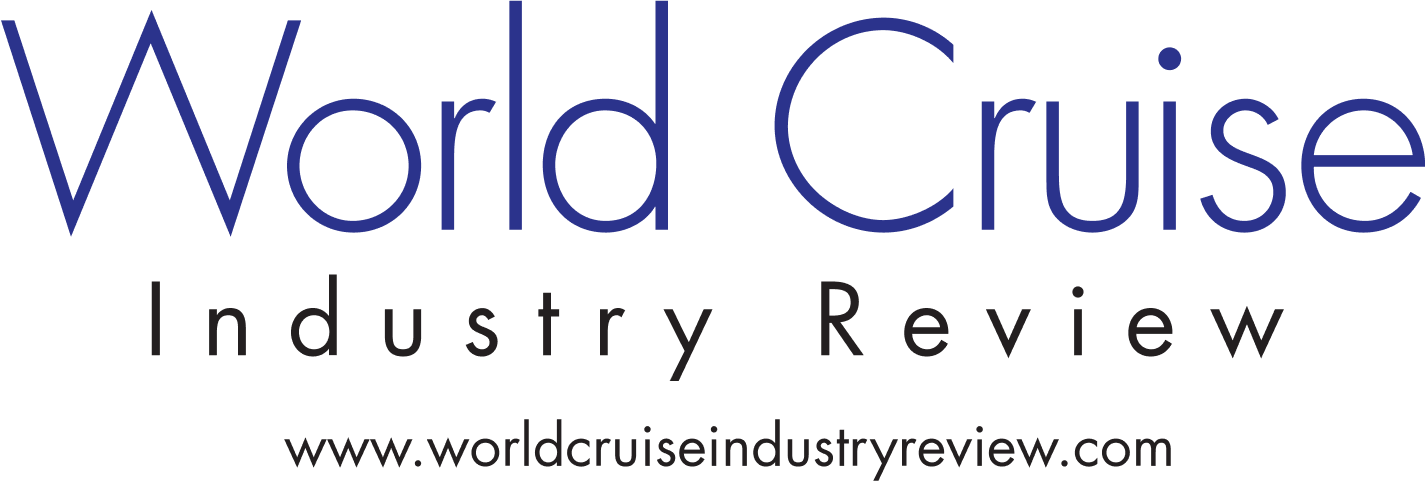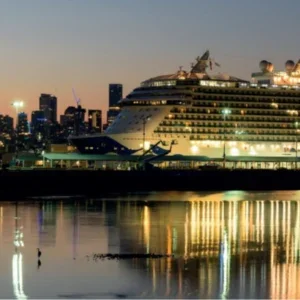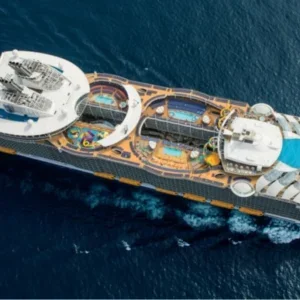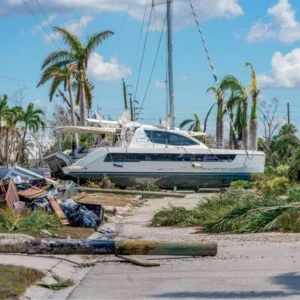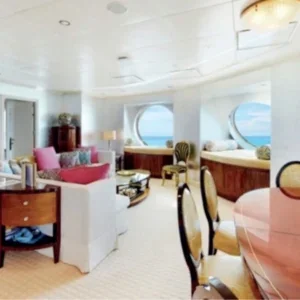Geopolitical instability, caused by the likes of the Arab Spring and EU-sanctioned embargo on Iranian oil supplies, has seen Brent crude-oil prices hit extreme heights.
Matters came to a head in May 2011, when prices peaked at $125 a barrel, and, in the three years since, the benchmark for oil has hovered around the $110 mark. While far from disastrous, cruise ship operators have, by their own admission, coveted a further drop in value.
It seems that some prayers have been answered. Despite ongoing unrest in Iraq, Libya and Ukraine, the price of Brent crude – at the time of writing – sits at a stable $105 a barrel. If economists have been concerned about anything in 2014, it has been an oversupply of oil and weakened demand.
But, as history has long taught us, stability only lasts a short time. Could this be the quiet before the storm? Some forecasters, citing a contango, believe it is only a matter of time before prices spike again as a result of the aforementioned conflicts.
The cruise industry will be keeping abreast of such potential trigger events with a gimlet eye. Forestalling potential crises, operators have long used risk-management models in a bid to secure continuous, affordable and guaranteed access to fuel.
Advanced order
As a means of combatting expensive fuel, hedging – through which oil is purchased in advance in order to pre-empt potential supply bottlenecks – is popular among some players.
Out of all the operators, Royal Caribbean is perhaps the most famous proponent of the strategy. While the group does not forecast fuel prices – calculations are based on present at-the-pump values – it practices non-stop hedging throughout the year, even when oil supplies appear to be at their most plentiful.
"Our strategy is not to speculate on market movements," says the group’s associate vice-president of global fuel supply Michael McNamara. "We do not attempt to either beat or time the markets with our strategies. Instead, we try and maintain a disciplined approach to reducing fuel price risk over time. We typically start hedging our fuel exposure three to four years out."
The approach has seemingly served the group well. In July, it reported strong second-quarter results for 2014, with an adjusted net income of $146.7 million. Based on current fuel prices, CEO Richard Fain has elected to include $231 million and $949 million of fuel expense in the third quarter and full year 2014 guidance, respectively.
Using a combination of fixed-price swaps and forward purchasing from suppliers, Royal Caribbean has 51% of its fuel demand already hedged for 2015, as well as 35% for 2016, and 15% for 2017.
Norwegian Cruise Line , which posted a second-quarter profit of $111.6 million, has also benefitted from a clearly defined hedging strategy. As of July 2014, the company had ring-fenced roughly 76%, 59% and 36% of its projected fuel purchases for the next three years respectively.
During the quarter, the operator also drastically cut back on its fuel costs. It paid $622 a ton, compared with $686 last year, while fuel consumption per capacity day fell 5.1%. And while overall fuel costs increased by 3.0% to $77.8 million, this marked a considerably lower rate of increase in contrast to other revenues, which were up by almost 20.0% to $765,927.
A clear forecast
Some operators, however, such as Carnival, have historically been more reluctant to hedge. Former CEO Micky Arison was a notable detractor of the strategy – "all it does is delay the inevitable," he once said – but the group has seemingly revised its assessment of late.
As a testament to this, the Carnival board recently conducted a study of fuel issues, in a bid to level out the ebb and flow of oil pricing.
"All companies like to have reasonably level costs to work with," said David Dingle, managing director of Carnival UK.
The group – under the watch of new CEO Arnold Donald – boasted impressive earnings of $3.5 billion for the recently concluded financial quarter. The results include net unrealised gains on fuel derivatives of $11 million, compared with unrealised losses of $31 million a year ago.
Aside from hedging, in the past, the industry has also flirted with levying passengers with surcharges as a means of procuring extra fuel. However, even in the event of an astronomical hike in oil prices, operators will be reluctant to revert to such measures – especially since extra charges much be now be laid out to passengers under modern consumer law.
Furthermore, many companies consider fuel surcharges to be at odds with the customer-friendly reputation they try to promote, and if a company is already hedging, the policy can appear to be particularly unjust on passengers.
"At this time, we do not plan on passing on higher fuel costs to guests by instituting a fuel surcharge," says Wendy Beck, chief financial officer and executive vice-president at Norwegian. "Instead, we have and are currently installing energy-saving equipment, including water-flow restrictors, HVAC monitors, galley energy-management systems and air curtains."
Aside from the upshot of unanticipated market events, the most dominant factor to have shaped the means by which the cruise industry procures its fuel supply has been the raft of emissions regulations to have been ratified in recent years.
In European ports, ships are now legally required to burn distillate – as opposed to bunker fuels – which produces a nominal sulphur content of 0.1% of total emissions. As of next year, as stipulated by the International Maritime Organisation (IMO), this will apply to EU seas as well – although, curiously, not the Mediterranean – meaning operators will have to purchase greener fuels.
Unfortunately for them, low-sulphur fuels do not come cheap, and are approximately 60% pricier than traditional bunker alternatives. This has already caused much head scratching among companies, as Francesco Balbi, director of cruise operations at Alicante Cruise Terminal – and former environmental coordinator at MSC Cruises – explains.
"The main challenge when burning cleaner fuels is the increase in fuel price," he says. "This is mainly due to the fact that low-sulphur fuel is a distillate product and there are high costs involved in the desulphurisation process. This also means extra costs for shipping."
Keep it tight
Legislation is even tighter in the US. North American emission control area (ECA) states that all ships operating within 200nm of the US and Canada’s coastline must use marine fuel with sulphur content below 1%.
Consequently, operators are now faced with the double challenge of not only needing to ensure they have a cast-iron supply of fuel, but that it is green, too.
To meet the required purity levels – while keeping costs down – several players have invested in retrofitting and scrubbing technology for their vessels. In February, Norwegian announced that it would install exhaust-gas scrubbers on six of its existing ships, as well as two new vessels.
However, as identified by the Cruise Lines International Association (CLIA), ECA regulations fail to ensure that fuel suppliers purchase and sell the same product that operators are now required to buy. The notion of such a distribution line, which is unaffordable and unavailable, is abhorrent to many in the sector.
"In addition to feeling the direct impact on our fuel costs, we’re also seeing indirect effects such as fuel surcharges from our logistics suppliers, as well as higher delivery costs in other areas of the supply chain," says Beck. "At Norwegian, we’re engaging our suppliers on an ongoing basis, providing them with estimated usage figures in order for them to plan and have ample compliant products on hand when needed.
"In addition, where appropriate, we enter into firm contracts with our suppliers to ensure product availability."
Ultimately, it seems, procuring fuel at the optimum price is contingent on a harmonious relationship between the respective operator and supplier. And, akin to any mercantile setting, it will be the customers with the biggest accounts – such as Norwegian and Royal Caribbean – that will get the best deals.
If some forecasters and economists are to be believed, and oil prices spike as a result of ongoing conflicts and volatile markets, this supply-chain dynamic could soon be put to the test.
